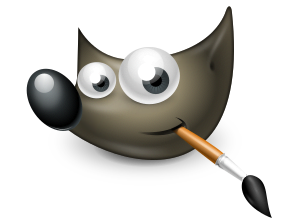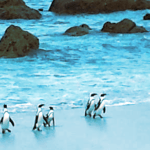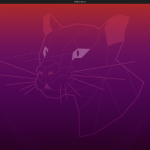GIMP
Gimp or GNU Image Manipulation Program is usually the first name on the list of image manipulation programs available for Ubuntu. It is powerful photo editing software with tons of advanced features photo editing Tools and filters that, together with its customizable interface and large collection of plugins, make it a very popular option. What makes it even better is the fact that it is open-source software for multiple platforms, so users can access all of these advanced quality features for free.
Now let’s take a detailed look at some of the most important features of the GIMP.
(a) Customizable interface
Often you want to limit the amount of things in your editor or customize the look. Unlike most editors, which don’t allow users such options, GIMP allows you to fully customize your environment and create a screen just the way you want it. See the picture below:
(b) Photo Editing Tools
As mentioned earlier, GIMP is packed with editing tools that are pretty useful for users. Below are the tools available in GIMP:
One of these is the Crop tool, which allows GIMP to select and extract part of the image. The shortcut Shift + C will launch the crop tool and you can then select the contour you want to cut out. The Shift key can be used to keep the original aspect ratio of the image, and then the Enter key can be pressed to confirm the final selection.
In the image below we selected the crop tool and then dragged the outline of the man out of the image:
Another feature that GIMP allows is the enhancement of color exposure in the image. This adjusts the highlights and ignores the darkest shadows in the image.
Now we’re about to add some exposure to the image above. The following is the output:
(c) Ability to read any file format
GIMP also allows users to read any file format, be it common format like gif, jpeg, png or rare formats like RAW or PSD (Photoshop). This is actually quite handy when a user needs to use some of their edits that they previously made in Photoshop or when they have a RAW file that they need to work on.
(d) Third Party Plugins and Programming Scripts
Almost all necessary image editing functions are already integrated in GIMP. In addition, GIMP also allows users to install additional plugins and packages that are not pre-installed. This is such an amazing feature that allows users to add additional filters and experiment with them. Besides that, it also accepts many scripts from programming languages like Python, showing its flexible nature.
Limitation of GIMP
As good as GIMP is, there are still some limitations in it, one of which is the inability to implement non-destructive editing features. The destructive editing that GIMP provides is basically the user’s manipulation of the original image. This becomes problematic later when you want to make some adjustments to the image you’re working on, since now you’ll either have to undo all the steps until we achieve that particular adjustment, or start from scratch.
Krita – Alternative to GIMP
This is where Krita, an open source photo editing and digital painting application, takes the upper hand over GIMP as it fully supports non-destructive layers and masks. Known as the ultimate application for artists, Krita offers so many phenomenal features such as brush engines, wraparound mode, color palette and much more.
In addition, it also offers support for layer management and many transformation tools that make editing easier. One of the best things that Krita offers is the built-in color wheel, which looks so pleasing to the eye:
Just like GIMP, the following tools are present in Krita:
Krita also has some of the best brushes to work with and that’s one of the reasons why it’s known as the perfect artist’s tool. The following image shows the brushes available in Krita:
However, Krita still lags behind GIMP in terms of image editing features.
Why is GIMP the most popular choice for image editing?
GIMP has long been the tool of choice for many Linux users. Although Photoshop isn’t easily accessible on Linux, GIMP has grown into a great option that’s just as powerful as Photoshop. Its features like layer masks, color tools, and flash filters allow users to have complete control over their images, and sophisticated plugins allow them to be further customized. It has some caveats to its name, but its open-source nature, along with a plethora of editing and painting features, makes up for it. This is one of the reasons it is so popular among Linux users.
Discover more from Ubuntu-Server.com
Subscribe to get the latest posts sent to your email.




